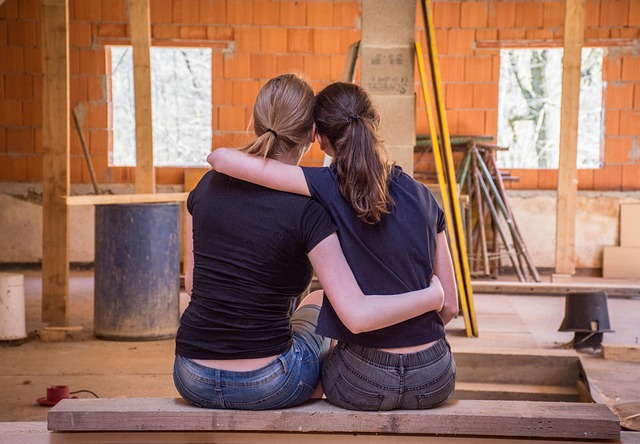
Maintaining Emotional Stability Empathetic Advice for Healthy Relationships
In any partnership, the ebb and flow of emotions can feel like a tide that either lifts or drags the relationship. Learning how to keep the shoreline steady—maintaining emotional stability—offers a foundation for healthier interactions, deeper intimacy, and mutual growth. The following guide blends scientific insight with everyday wisdom, crafted from an empathetic perspective that honors both partners’ feelings and needs.
Understanding the Roots of Emotional Instability
Emotions arise from a complex mix of biology, personal history, and situational triggers. Hormonal shifts, stress hormones, and neural pathways all contribute to how quickly and intensely we react. Past experiences—especially childhood attachment patterns—often color our expectations and reactions in relationships. Recognizing these underpinnings is the first step toward maintaining emotional stability.
- Hormonal fluctuations can amplify feelings of anxiety or joy.
- Unresolved trauma may cause disproportionate reactions to perceived threats.
- Communication habits, learned in early life, influence how conflict is expressed.
Practical Tips for Grounding Yourself
Grounding transforms intense moments into manageable pauses. By anchoring attention to the present, you give yourself space to choose a response rather than reacting impulsively.
- Mindful Breathing: Inhale slowly for four seconds, hold for one, exhale for four. Repeat until the breath feels steady.
- Physical Anchors: Notice the sensation of your feet on the floor or your hands on your lap. These simple cues keep you rooted.
- Pause Before Speaking: Count to three internally before replying during a disagreement.
Building Emotional Self‑Awareness
Self‑awareness is the compass that points toward emotional stability. It involves recognizing your feelings, triggers, and patterns—both conscious and subconscious. When each partner can map their emotional landscape, misunderstandings shrink, and empathy grows.
“Self‑awareness is the quiet voice that tells you, ‘Here is what you need, not what you want.’” — A therapist’s insight into the art of internal listening.
Techniques for cultivating self‑awareness include:
- Daily Journaling: Write three thoughts after each interaction—what felt good, what felt off, and why.
- Emotion Naming: Label feelings precisely: “I feel irritated,” not just “annoyed.”
- Regular Check‑Ins: Set a weekly time to discuss emotional highs and lows openly.
Embracing Vulnerability as a Strength
Vulnerability often feels risky, but it is the bedrock of intimacy. Sharing fears, hopes, and insecurities invites empathy, which in turn bolsters emotional stability.
Steps to practice vulnerability include:
- Start with small disclosures—share a recent worry or a favorite memory.
- Respond with active listening: nod, maintain eye contact, and paraphrase.
- Accept gentle feedback without defending yourself automatically.
Effective Communication Patterns
Communication is more than words; it’s tone, timing, and mutual respect. When both partners adopt constructive patterns, the likelihood of misinterpretation and emotional escalation drops significantly.
- Use “I” Statements: Express feelings from your perspective, e.g., “I feel hurt when plans change last minute.”
- Active Listening: Repeat the other’s point before responding, confirming understanding.
- Time‑Outs: If emotions surge, agree to pause the conversation for a set period.
Conflict as Growth, Not Threat
Conflict is inevitable, but how it’s approached determines whether it threatens stability or fosters resilience. Reframe disagreements as opportunities to learn about each other’s needs.
- Identify the underlying need: Is it autonomy, appreciation, or reassurance?
- Separate the issue from the person: Focus on the problem, not the character.
- Co‑create solutions: Ask, “What can we both do to feel heard?”
Creating Rituals That Support Emotional Balance
Rituals—small, intentional actions—can anchor emotional well‑being in daily life. They provide predictability and a shared sense of purpose.
- Morning Coffee Check‑In: Ask each other about one positive thing expected that day.
- Weekly “Relationship Night”: Dedicate an evening to talk, play a game, or simply be present together.
- Gratitude Journals: Write one thing you appreciate about your partner before bed.
Maintaining Emotional Stability During Life’s Ups and Downs
Transitions—new jobs, parenthood, health changes—can unsettle the emotional equilibrium. Proactive strategies keep the partnership resilient.
- Plan Check‑In Times: Even in chaos, schedule 10‑minute moments to share feelings.
- Seek External Support: Therapy or support groups can provide neutral perspective.
- Practice Self‑Compassion: Treat yourself as you would a friend, especially when you stumble.
The Role of Empathy in Emotional Stability
Empathy is the bridge that turns personal experience into shared understanding. When empathy thrives, the relationship absorbs shocks more effectively.
“Empathy is the quiet assurance that you are not alone in your feelings.”
Ways to nurture empathy:
- Reflect on your partner’s perspective before reacting.
- Validate feelings: Even if you disagree, acknowledge the emotion behind it.
- Engage in active questioning: “How did that make you feel?”
Self‑Care as a Pillar of Partnership Stability
Individual well‑being directly influences relational health. Prioritizing self‑care ensures you bring your best self to the partnership.
- Regular Physical Activity: Exercise reduces stress hormones that spike emotions.
- Mindfulness or Meditation: Daily practice calms the nervous system.
- Healthy Sleep Habits: Sleep deprivation heightens emotional reactivity.
Conclusion: A Continuous Journey
Maintaining emotional stability is not a destination but a dynamic process that evolves with each shared experience. By intertwining self‑awareness, compassionate communication, and supportive rituals, couples can transform volatility into a steady rhythm of understanding and growth.
Remember that empathy fuels emotional resilience; it turns challenges into collaborative adventures rather than solitary struggles. When each partner invests in their emotional steadiness, the relationship itself becomes a sanctuary—one that supports both individual flourishing and collective joy.

